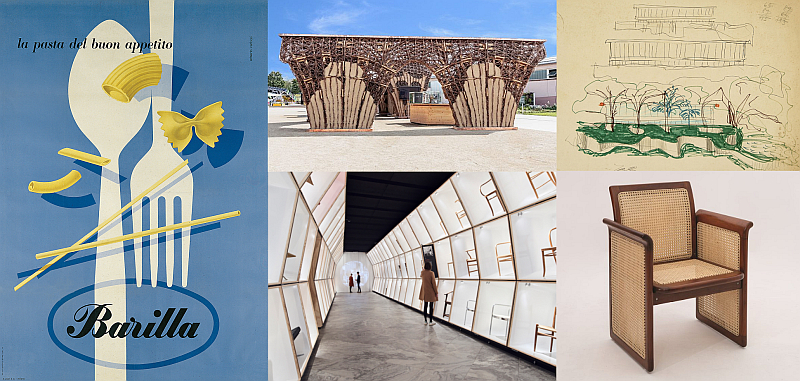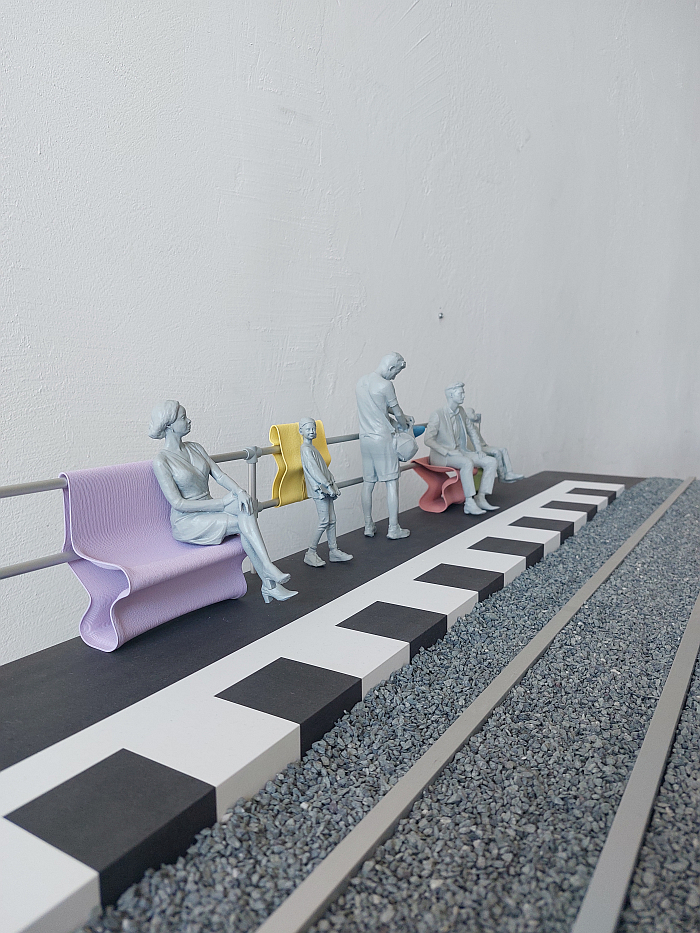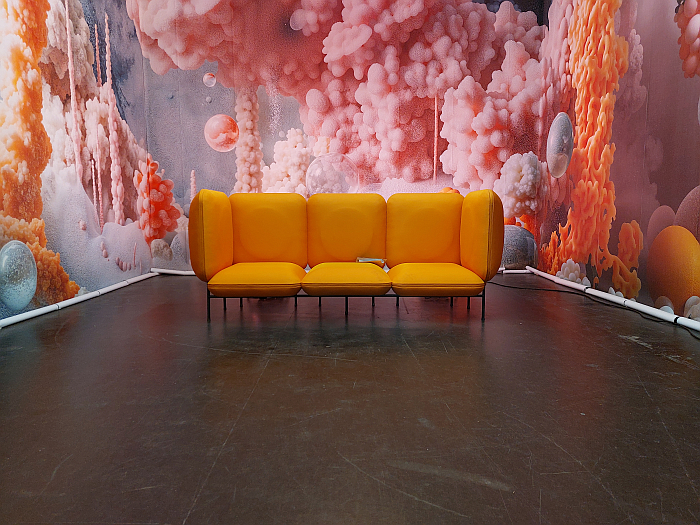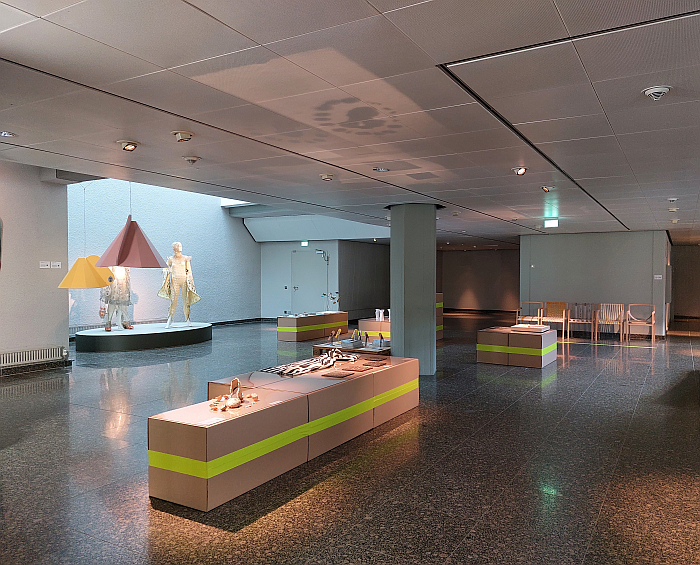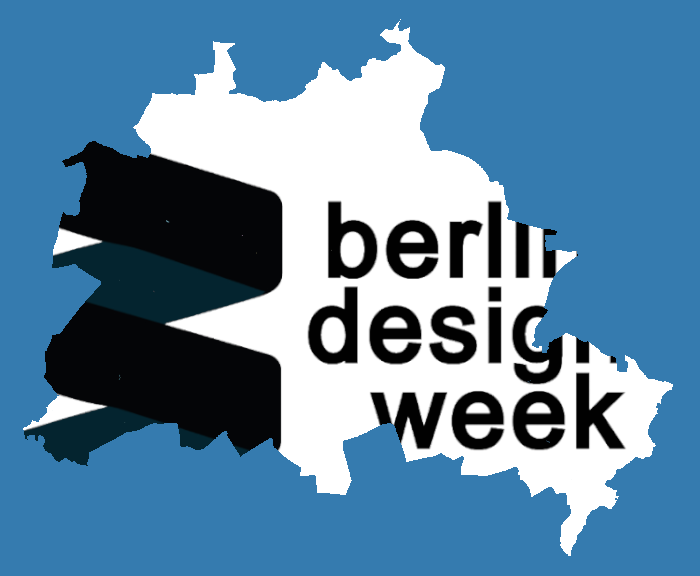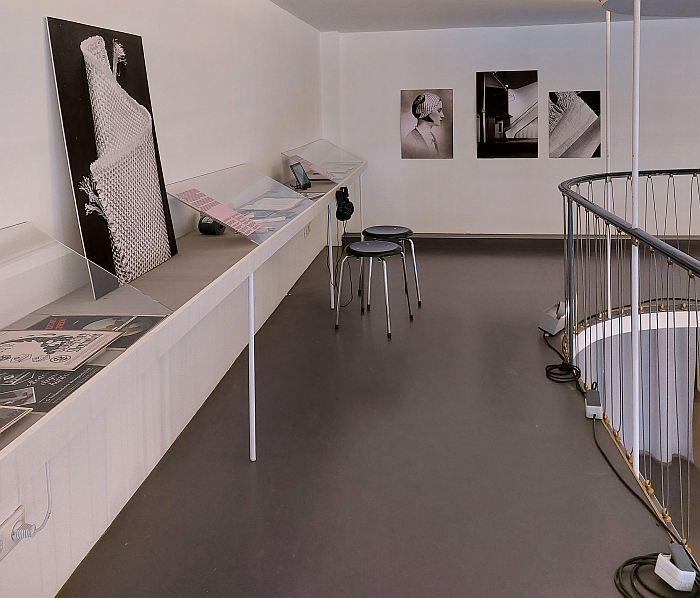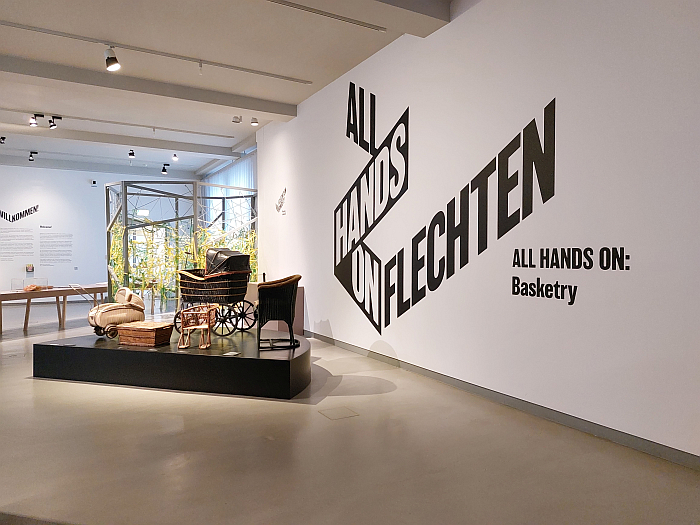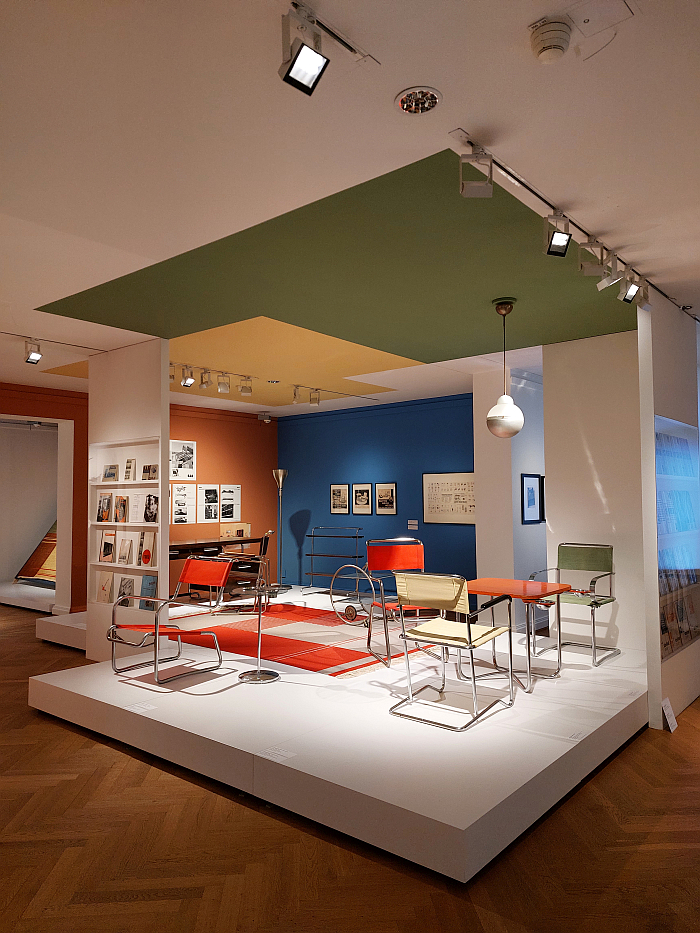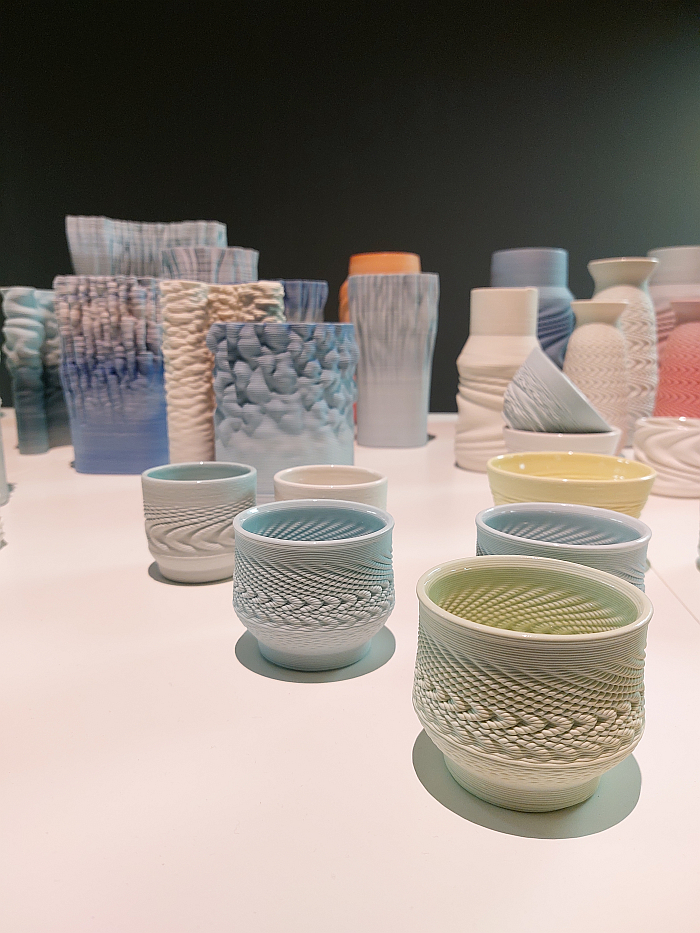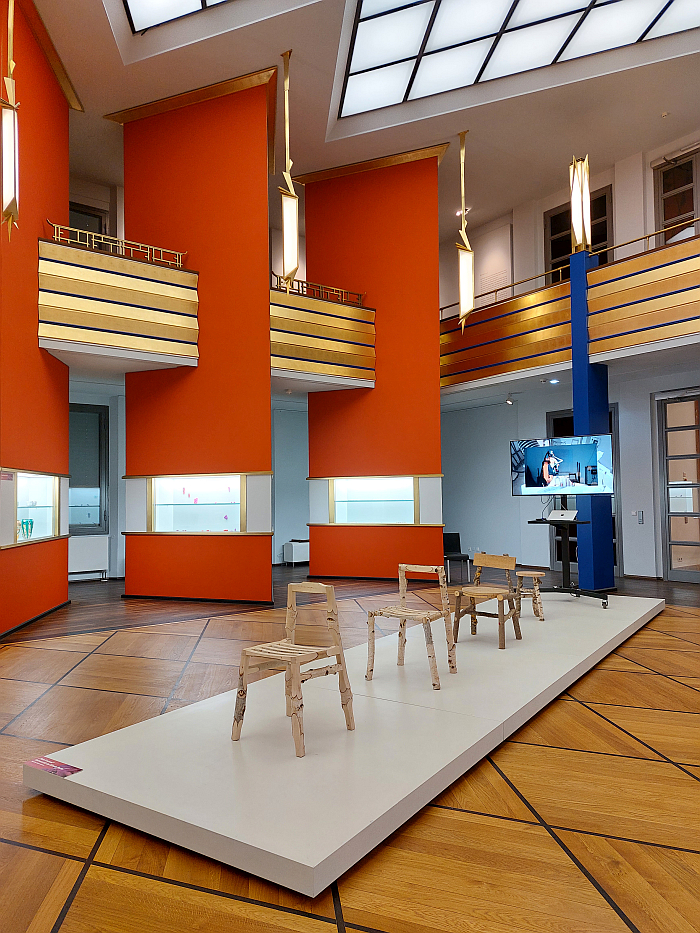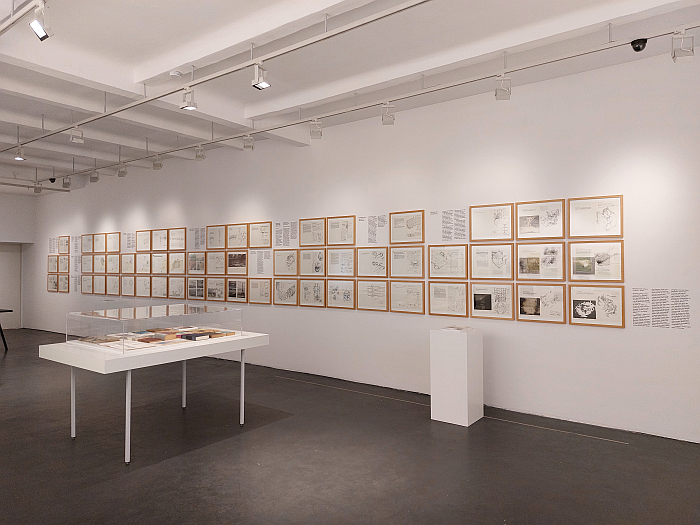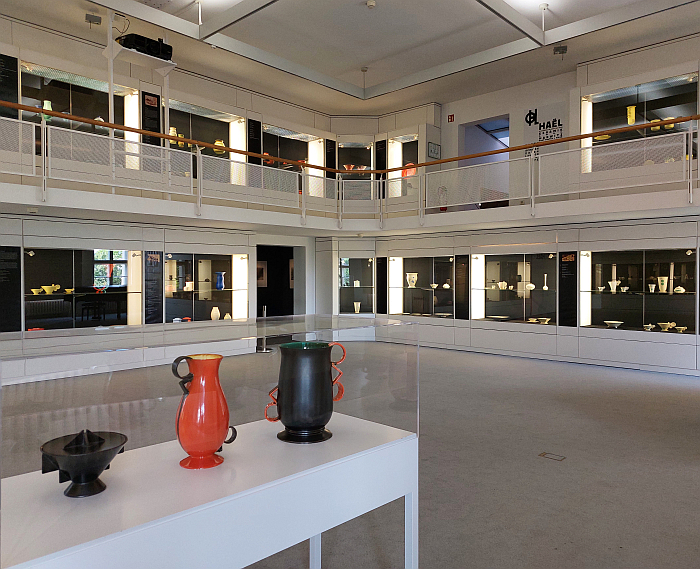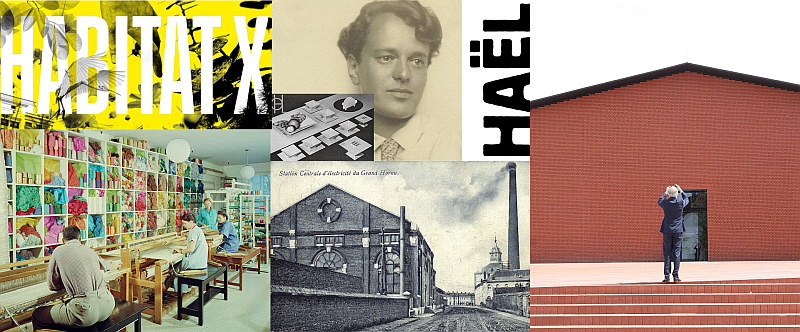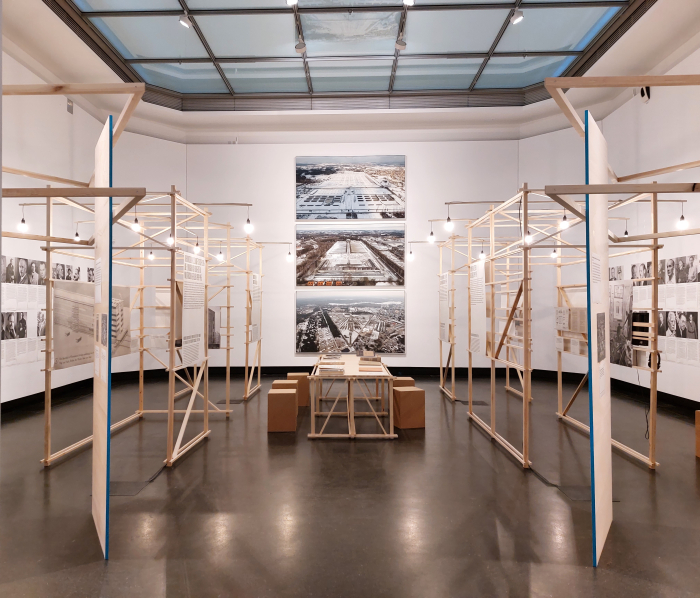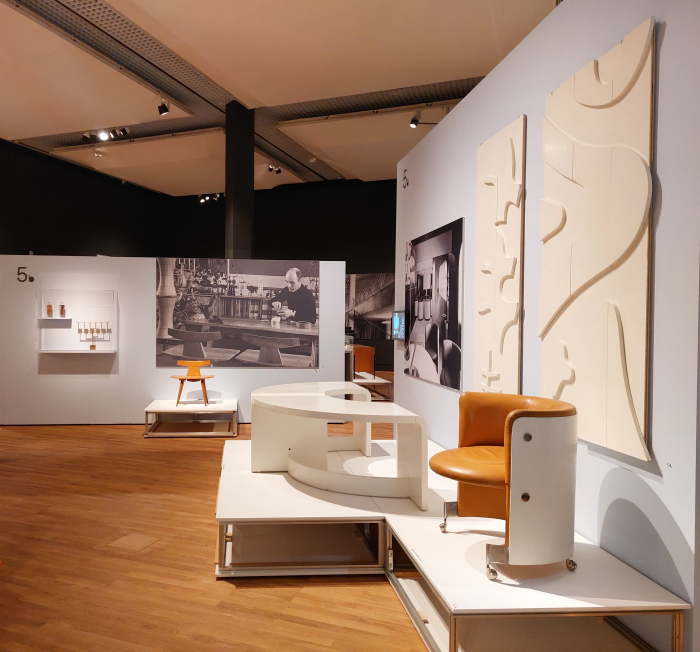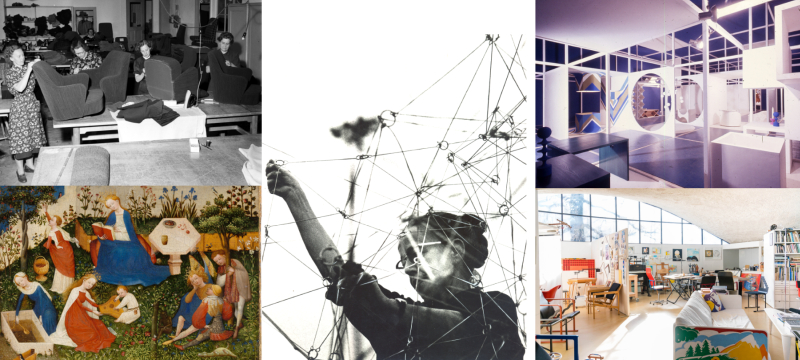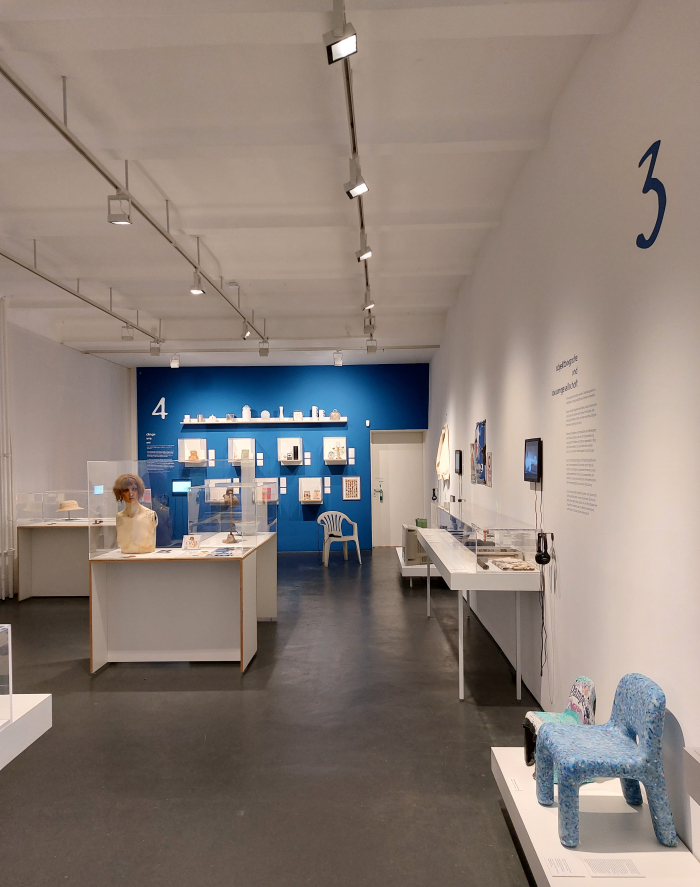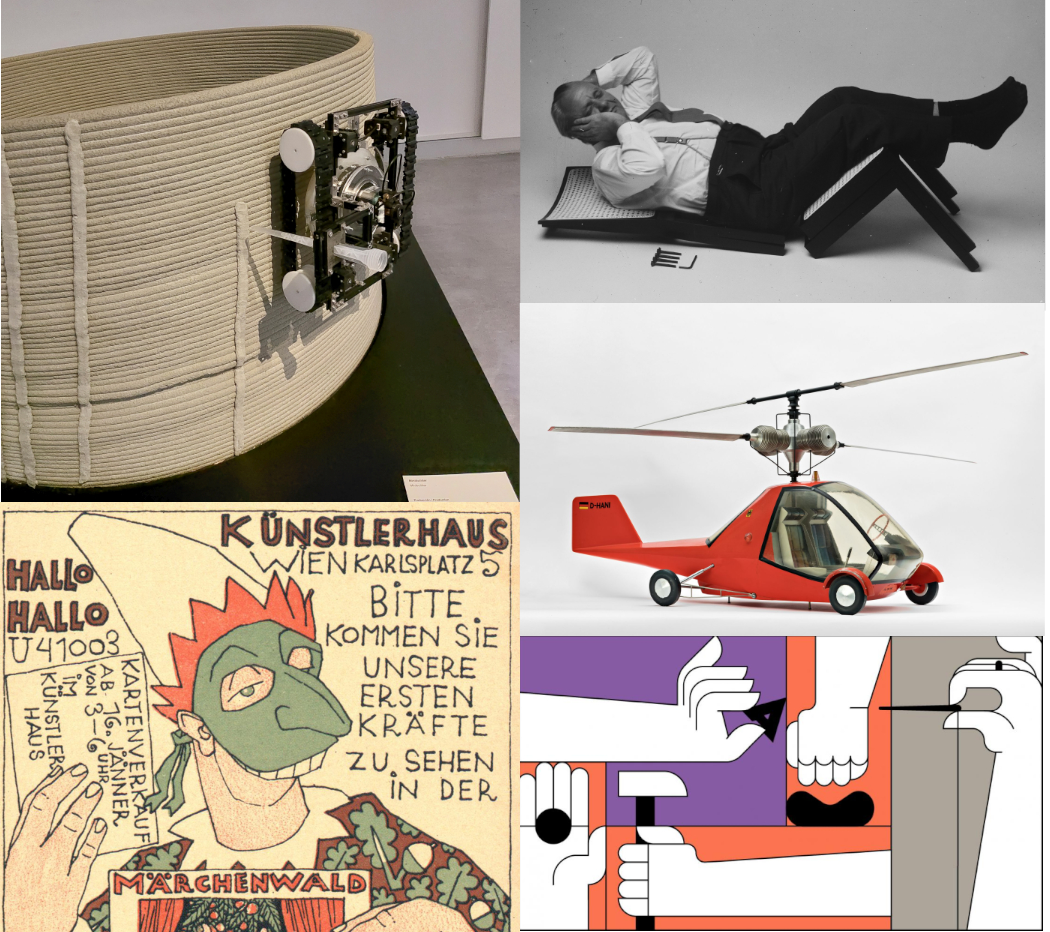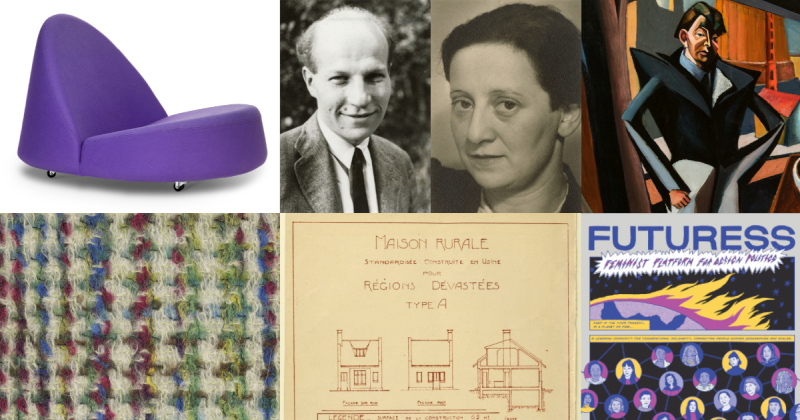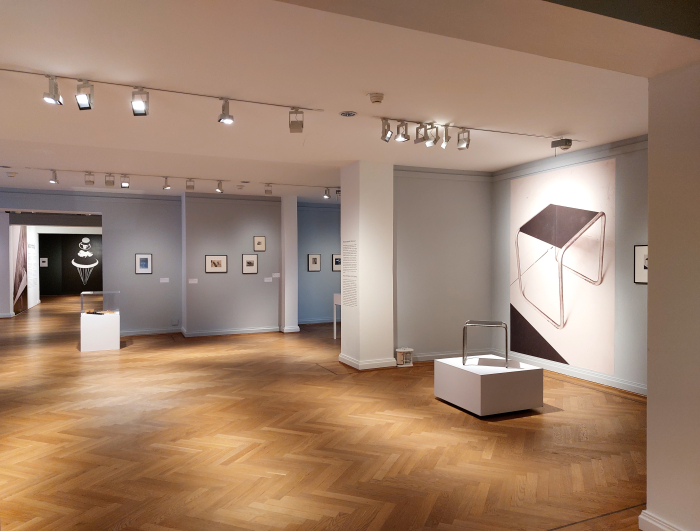5 New Architecture & Design Exhibitions for October 2024
Despite what you may have have been led to believe, Oktoberfest isn’t in October.
Or is barely in October.
It’s primarily in September, ends on the first Sunday in October.
Meaning in 2024 it’s all over on the 6th of October.
Leaving you the rest of the month to over-consume in reasonably-priced architecture and design museums rather than over-consuming in over-priced beer tents.
Our five locations for a party of the spirit, intellect, soul and for improving your understanding of the world material and immaterial around you in October 2024 can be found in Brussels, New York, Hornu, Berlin, and, once the beer tents have been packed away for another year, Munich…….
Profitopolis or the Condition of the City at the Werkbundarchiv – Museum der Dinge, Berlin
“Das Unbehagen an unseren Städten ist ziemlich allgemein”1 opined the German architecture and design theoretician Hans Eckstein in 1972, ‘discontent with our cities is fairly universal’, continuing ‘it is growing day by day. Accusations and indignation are heard everywhere. It is almost impossible to ignore the amount of literature about the miserable condition of our cities.’ Yet despite the apparent, certainly for Eckstein, urgency and ubiquity of the discontent, he laments that ‘there are hardly any signs that this malaise could one day translate into behaviour, let alone action, that would give hope for a turn for the better.’
Hardly any signs, but some. Including the exhibition Profitopolis oder: Der Mensch braucht eine andere Stadt, Profitopolis or: We need a different city, a project initiated by architect Josef Lehmbrock and critic Wend Fischer, the latter the, then, director of Die Neue Sammlung, Munich, that premiered in Die Neue Sammlung in November 1971, and which reflected critically on contemporary cities and urban planning, was, as the subtitle announces, ‘An exhibition about the wretched condition of our cities and the need to change this situation so that people can once again live in a city with human dignity’; and thus an exhibition that sought to be a stimulus for the ‘turn for the better’ a Hans Eckstein longed for.
And 50 years later?
Where are our cities today?
Where are the residents of our cities today?
How (dis)content are we with our cities today?
With the exhibition Profitopolis or the Condition of the City the Werkbundarchiv – Museum der Dinge, Berlin, reflect on the arguments of 1971 in the 2024 we became, on the paths from then to now, on the role of the Deutsche Werkbund then, since and now, and thereby enable space for reflections and considerations on not only why our contemporary cities are as they are, but possible ways forward in context of our cities and those who inhabit them…….
5 New Architecture & Design Exhibitions for June 2024
June sees the start, in the northern hemisphere, of both meteorological summer and astronomical summer
Yet for all that the arrival of summer invariably means an increasing living of life out-of-doors, and an increasing reluctance to concern oneself with overly cerebral activities, there are after all beaches to be lain on, alpine passes to be explored, and phenomenally lightweight pop novels to be read, it is important to not only take regular breaks from the sun, but also to ensure that you keep your mental faculties as fit and active as your physical ones: you’ll need them come autumn.
And an architecture and or design museum offers the perfect location for both.
Our recommended meaningful shady retreats in summer 2024 can be found in Ulm, Copenhagen, Karlsruhe, Bloomfield Hills and Berlin……
Bauhaus and National Socialism at Klassik Stiftung Weimar
From the Bauhaus Museum Weimar you can see the Buchenwald concentration camp; from the Bauhaus Museum Weimar you can exactly locate the violence and inhumanity of the NSDAP.
However from Bauhaus Weimar and Bauhaus Dessau and Bauhaus Berlin locating the NSDAP is a lot less straightforward; from the Bauhauses seeing the NSDAP is not as simple, the view towards the NSDAP being as it is partially hidden, lightly distorted, unfocussed, by the mists of an unquestioned post-War narrative. And that despite, or perhaps exactly because of, the various and varied links between the Bauhauses and the NSDAP.
With the exhibition programme Bauhaus and National Socialism the Klassik Stiftung Weimar enable a much clearer view on not just the NSDAP from the perspective of the Bauhauses, but also allow for more nuanced reflections on a still astoundingly relevant, if often incompletely discussed, chapter in European (hi)story…….
Berlin Design Week 2024 Compact: Morari by Jesse Altmann, Valentina Lenk and Klara Schneider
Berlin Design Week 2024, Juten Tach!
Over the years of these dispatches design weeks in Berlin, in a wider sense design and designers in Berlin, have played a very important role, as can be gauged from the tag cloud in the footer: Berlin is one of our most regularly used tags, and DMY Berlin occurs more often than a great many designers, manufacturers, fairs and other festivals.
A DMY Berlin that back in the day we used to essentially live in; like some awkward, artless, commensalistic symbiont we would spend days on end drifting round the event, and indeed round Berlin, feeding, hungrily, from it. And in doing so learned so much, met so many people who greatly assisted us in finding our way forward, met so many projects which we still refer back to when reflecting on that which is before us, as we grapple on daily basis with “design” as a term.
And then DMY Berlin imploded. Quite spectacularly so.
But by which point there was a new event in town: state of DESIGN. A, looking back, we’d argue, breakaway from DMY, a desire on the part of the organisers to do something different, to stage a different sort of design event. And an attempt to link back, in context and acceptance of the new realities in which Berlin and design found themselves, to Designmai, that near mythical Berlin design event, which, at that time, set new standards for design festivals, and from which DMY arose as, looking back, we’d argue, a breakaway, as a desire on the part of the organisers to do something different. There’s that helix again.
And then an awful lot of things imploded. Quite spectacularly so.
Including our relationships with the state of DESIGN organisers. Whereby we can’t remember exactly what happened, are absolutely certain though it was our fault. If we remember correctly things started rumbling in Cologne, it certainly got a bit messy in Cologne. And then even messier in Berlin. Although that said, and thinking a bit further, we may be able to shift some of the blame elsewhere. Or consider it all water under the bridge. Life and that. We’ll certainly always be grateful for the good times. And for all we learned.
And not only did our relationships with the state of DESIGN festival organisers change for the worse, but also within the state of DESIGN festival family relationships were negatively realigned, and after a couple of years as an independent festival state of DESIGN reorganised itself in a much more reduced form, if still with just as much ambition and desire and appetite, and ideas, as a component of a newly conceived Berlin Design Week, an event that united a trio of existing events under a unified banner. And under the guidance and leadership of part of the state of DESIGN festival family.
And while we didn’t actively avoid the new Berlin Design Week, we were at the first edition, or at least part of it, we, as we are, avoided the more commercial parts, of which there were, certainly in our memory, a great many, particularly around Bahnhof Zoo, we did stop prioritising it, did stop clearing time in our calenders for Berlin, as we’d once done. And so stopped attending without ever planning to stop. Space in our calender is very quickly filled.
And then came Covid, and not only were calenders thoroughly irrelevant but Berlin was suddenly a long, long way away. As was Berlin Design Week.
But Berlin Design Week is still there.
Which is good, not least because if there is one city that should, must, have a design week it’s Berlin. And we’re not saying that from a nostalgic viewpoint, nostalgia ain’t our bag, but from a design point of view. The two need each other.
For its 2024 edition Berlin Design Week combines, in a well established, and always pleasing, practice, a central exhibition space, this year in the Peter-Behrens-Bau in Oberschöneweide, with decentral spots around the city, and also with the showcase NEXT. Young European Design in the Kunstgewerbemuseum. But, and pleasingly, doesn’t feature the mass commerce around Bahnhof Zoo.
We’re back at Berlin Design Week 2024, again not nostalgia but genuine curiosity and hankering to see the works and projects and positions on show, and over the next few days we will bring you some of our thoughts and reflections on some of those works and projects and positions experienced, and some of our thoughts and reflections on Berlin Design Week 2024 as an event….. unless that is the organisers see us, in which case we’ll be hiding in a cupboard. JOKE!!! Will of course say hello.
And for all in or near Berlin, Berlin Design Week 2024 runs until Sunday May 5th.
Further information can be found at https://berlindesignweek.com
5 New Architecture & Design Exhibitions for May 2024
As all around, certainly all around here in Europe, the world blossoms and blooms into life, as colour and variety and vitality abound, it’s strange to remember that just a few short weeks ago everything was so barren, monochrome, desolate.
Not least in context of the global architecture and design museum community: how hard we had to labour to achieve anything approaching what could justifiably be termed a ‘list’ of new architecture and design exhibitions.
Similarly it’s hard to imagine that in a few short weeks we will once again be in a position of scrubbing around looking for new exhibitions worthy of mention.
But spring and early summer are months of abundance, months where new exhibitions are waiting to be harvested, months to take advantage of while the going is good. We could have published two lists for May 2024, decided however to stay with the one; would however very much encourage you all to visit, at least, two lists worth. If not more. Get your fill while you can.
Our 6 recommendations for new exhibitions opening in May 2024, our starting points for May 2024, take us all to Berlin, Prague, Jyväskylä, Milan, Brussels and Weimar…….
Otti Berger. Weaving for Modernist Architecture at the Temporary Bauhaus-Archiv, Berlin
“To meet the needs of a living architecture,” opined Otti Berger in 1930, “we need clarity about what fabric is, and further, what fabric in space is”.1
With the showcase Otti Berger. Weaving for Modernist Architecture the Temporary Bauhaus-Archiv, Berlin, allow one to begin to approach appreciations of what both Otti Berger understood as fabric, “and further, what fabric in space is”, and in doing so not only enable differentiated perspectives on Weaving and Modernist Architecture but allow Otti Berger to begin to retake her place on the helix of design, and architecture, (hi)story……
All Hands On: Basketry at the Museum Europäischer Kulturen, Berlin
Basketry has something of the archaic about it, almost anachronistic, has echoes of a past we’ve all long moved on from.
With the exhibition All Hands On: Basketry the Museum Europäischer Kulturen, Berlin allow for, demand, a critical reassessment…….
Hej rup! The Czech Avant-Garde at the Bröhan Museum, Berlin
There is an argument to be made that popular understandings of, and the popular presentation of, inter-War European avant-garde architecture and design tend to focus on Germany and Russia, and on Functionalism, popular foci that tend to cause us all to forget that the inter-War European avant-Garde was a homogenous mix of positions and, and as with the Art Nouveau before it, an international moment defined by its variety of regional dialects.
With the exhibition Hej rup! The Czech Avant-Garde the Bröhan Museum, Berlin, provide for an introductory course in inter-War Czechoslovakian…….
The Tube. An Architecture for Conceivable Times at the Werkbundarchiv – Museum der Dinge, Berlin
“If we want to survive, if we want to reach the next level”, postulated the German architect Günther L. Eckert in 1980, “we simply have to risk the impossible. It is too easy to invest only in common logic and to dismiss everything that does not have these specific characteristics, everything that encroaches into the incorruptible dimensions of creative self-consent”.1
Günther L. Eckert’s “impossible”, his distancing from “common logic”, his encroaching “into the incorruptible dimensions of creative self-consent”, was the so-called Kontinuum, Continuum, a 250 metre diameter tube which formed a complete, unbroken, circle around the globe, constituted a Kontinuum around the globe, and in which all humanity was to live.
With the exhibition The Tube. An Architecture for Conceivable Times, the Werkbundarchiv – Museum der Dinge, Berlin, introduce Eckert’s Kontinuum and thereby allow space for reflections on not only architecture and the built environments we create for ourselves, and the whys and wherefores of those environments, but also on the possibilities for the future of both human societies and the natural environment on which we all depend.
And an exhibition on a Kontinuum that is also the last Werkbundarchiv – Museum der Dinge exhibition in their long-time home in Berlin-Kreuzberg, marks the end of their continuance in Berlin-Kreuzberg, before their imminent, involuntary, investor enforced relocation…….
Haël. Margarete Heymann-Loebenstein and her workshops for decorative ceramics 1923-1934 at the Bröhan Museum, Berlin
The popular Bauhaus focus, preoccupation, of discussions on creativity in the 1920s very naturally leads to us all ignoring other important protagonists, causes us all, when oft unwittingly, to miss other equally valid, and enjoyable, paths to appreciations of developments in craft, design, technology and our objects of daily use in the early decades of the 20th century, that important, and still very relevant, period where handwork increasingly ceded to industry.
With Haël. Margarete Heymann-Loebenstein and her workshops for decorative ceramics 1923-1934 the Bröhan Museum, Berlin, helps one locate, and begin to explore, one of those regularly overlooked paths and thereby allows one to begin to develop those more probable appreciations…….
5 New Architecture & Design Exhibitions for July 2023
In July 1969 Apollo 11 landed on the moon, and as Neil Armstrong stepped from the Eagle lunar module he announced it was, “one small step for [a] man, one giant leap for mankind”.
And inarguably it was. And was.
But what has it brought mankind?
Apart from an awful lot of conspiracy theories. And an ongoing fascination with space that drives the irrational belief that in the 21st century we urgently require everything which appeared in 1950s and 1960s science fiction comics and films in order to have happy, functioning societies.
Yes, it also brought us Gil Scott-Heron’s, ever glorious, and still very relevant, Whitey on the Moon; a work that through it’s continuing, unabated, undiluted, relevance reminds us all how little Apollo 11 has brought mankind.
Other small steps can, we’d argue, be much more meaningful. Can enable longer leaps in more meaningful directions.
Such as the small step into an architecture or design museum; a step that can, will, inform and entertain, can, will, allow fresh insights and perspectives, can, will, cause a questioning and reflection: and thereby, potentially, enable the development of differentiated thoughts and appreciations on the now and on that now still to come. And perhaps in doing so quell a few conspiracy theories. And so allow for the development of a future worthy of the name.
Our five featured short steps for July 2023 can be taken in Stuttgart, New York, Hornu, London and Berlin…….
Power Space Violence. Planning and Building under National Socialism at the Akademie der Künste, Berlin
Everyone knows that the Nazis built Autobahnen. Everyone knows that the Nazis built an imposing and daunting parade ground in Nürnberg. And that they had outrageous, decadent, plans for Berlin. But the wider architecture and spatial planning projects of the NSDAP dictatorship are not only a lot less well known, but a lot less well understood, and certainly far less well popularly reflected on in wider contexts of the relationships between architecture, spatial planning, state, community, identity, control etc, etc, etc. Similarly far too irregularly posed is the question why and wherefore the NSDAP undertook so many varied and various architecture and spatial planning projects; and when it is posed is all too often answered with well worn references to representation and a desire to drive their shiny new Volkswagens, their shiny new Porsches, really, really fast.
With the exhibition Power Space Violence. Planning and Building under National Socialism the Akademie der Künste, Berlin, allow one to begin to reflect on such themes and also to begin to learn to better formulate such questions…….
Retrotopia. Design for Socialist Spaces at the Kunstgewerbemuseum, Berlin
It is, we’d argue, fair to say that most people in western Europe still have a very stereotypical, skewed, if not prejudiced view of late 20th century design in and from those nations that form the eastern half of the European continent.
With Retrotopia. Design for Socialist Spaces the Kunstgewerbemuseum, Berlin, in cooperation with numerous museums and institutions from across eastern Europe, provide an introduction to post-War 20th century architecture and design in and from Croatia, the Czech Republic, East Germany, Estonia, Hungary, Lithuania, Poland, Slovakia, Slovenia and the Ukraine, and in doing so invite us all to begin to approach more probable and more meaningful positions……
5 New Architecture & Design Exhibitions for March 2023
“March is the Month of Expectation.
The things we do not know”,
opined once the American poet Emily Dickinson.1
Easily enough resolved!!!
And no, not by “Persons of prognostication”, whom one should definitely always “show becoming firmness”; but by visiting an architecture or design exhibition and approaching that which you don’t know via your own inquiry and questioning and reasoning.
Our five recommended locations for transforming expectations into knowledge in March 2023 can be found in Berlin, Espoo, New York, Nyköping and Weil am Rhein…….
The Story of My Life. Object Biography as Concept, Method and Genre at the Werkbundarchiv – Museum der Dinge, Berlin
“Der var en stolt Theepotte“, “there was a proud teapot”, so begins Hans Christian Andersen’s 1863 tale, The Teapot, Andersen continuing by recording that said teapot was, “proud of its porcelain, proud of its long spout, proud of its broad handle”; the start of the biography of an everyday household object, the start of the biography of one of those anonymous goods with which we all surround ourselves, that is one of the first items one meets in the Werkbundarchiv – Museum der Dinge, Berlin, exhibition The Story of My Life. Object Biography as Concept, Method and Genre.
And a biography of an anonymous everyday object, alongside the many, many other object biographies featured and discussed in The Story of My Life, which helps assist the Werkbundarchiv – Museum der Dinge explore less object biographies per se as to explore the place and function and relevance and reading of the object biography, and thereby to question our complex relationships with those objects with which we surround ourselves, to question relationships between the human world and the object world…….
5 New Architecture & Design Exhibitions for December 2022
According to popular (hi)story the tradition of the Christmas tree originated in the lands of the contemporary Germany. And with O Tannenbaum it was in the lands of the contemporary Germany that that most popular ode to the Christmas tree was first sung.
But it’s not by way of celebration of Germanic contributions to the Christmas season that all five of our new exhibition recommendations for December 2022 are in Germany, Austria or Germanophone Switzerland.
It’s just the way the dice fell. Just where the five most interesting sounding new architecture and design exhibition openings in December 2022 were to be found. As were what would have been at 6, 7 and 8 on our list. Had it continued that far.
And while we’d much rather, would much prefer, that they were more geographically, globally, strewn; thematically they are disparate, and all very much international, universal, in their subject matter and relevance. Plus, and lest we forget, an exhibition opening should never be understood as a reason to visit a particular museum, although please, please, do; but as an invitation to busy oneself with the subject and themes therein, an invitation to begin a journey.
Thus view what follows not as five exhibition recommendations in Germanophone Europe, but as five extra candles for your 2022 Christmas tree, five extra candles lighting your way forward into 2023 and beyond…….
5 New Architecture & Design Exhibitions for November 2022
We published our first monthly list of exhibition recommendations on November 1st 2013, one of those short, superficial, posts we used to compose, having as we did back then endless time on our hands; and an intervening nine years that means that with this list for November 2022 we are entering our tenth year of helping you advance your cultural education.
While being very much aware that the vast majority of you have never visited a single one of the circa 450 new exhibitions we’ve carefully and conscientiously selected for your delectation, nor indeed have the vast majority of you visited any architecture or design exhibition in the past nine years: that the vast majority of you have chosen to neglect your cultural education. However, one of the joys of the museum exhibition as a format for elucidation, exploration, energising and entertainment, the reason we don’t give up on you all, is that, the next opportunity is always approaching.
Thus, while that which you have missed is gone for ever, and you’ll just have to try to catch up as best you can; that which is still to come is an opportunity waiting to be grasped. And in November 2022 there is an unusually large and varied amount of opportunities to grasp; the global architecture and design museum community unleashing a plethora of diverse new showcases.
And a plethora of new exhibitions opening in November 2022 that we were simply unable to narrow down to five. It would also have felt unjust given how many new showcases there are.
Our five six new opportunities to advance your cultural education in November 2022 can be found in Leipzig, Edinburgh, Winterthur, Berlin, New York and Vienna…….
Lucia Moholy – The Image of Modernity at the Bröhan Museum, Berlin
“Everybody, except myself, have used, and admit to having used my photographs … and often also without mentioning my name”, lamented Lucia Moholy in 1956, “everyone – except myself – have derived advantages from using my photographs, either directly, or indirectly, in a number of ways, be it in cash or prestige, or both”.1
The photographs in question being of and from the Weimar and Dessau Bauhauses, photos which played, and continue to play, a not unimportant role in mediating Bauhaus to a wider audience. But which in doing such don’t necessarily help mediate Lucia Moholy to that wider audience. On the contrary, they tend to hold her in a relative anonymity.
With Lucia Moholy – The Image of Modernity the Bröhan Museum, Berlin, help explain how such a situation came to be, why Lucia Moholy’s lament is both justified and an important lesson, and also how it relates to popular understandings of Bauhaus.
But for all seek to redress some of the ongoing consequences of that relative anonymity…….


